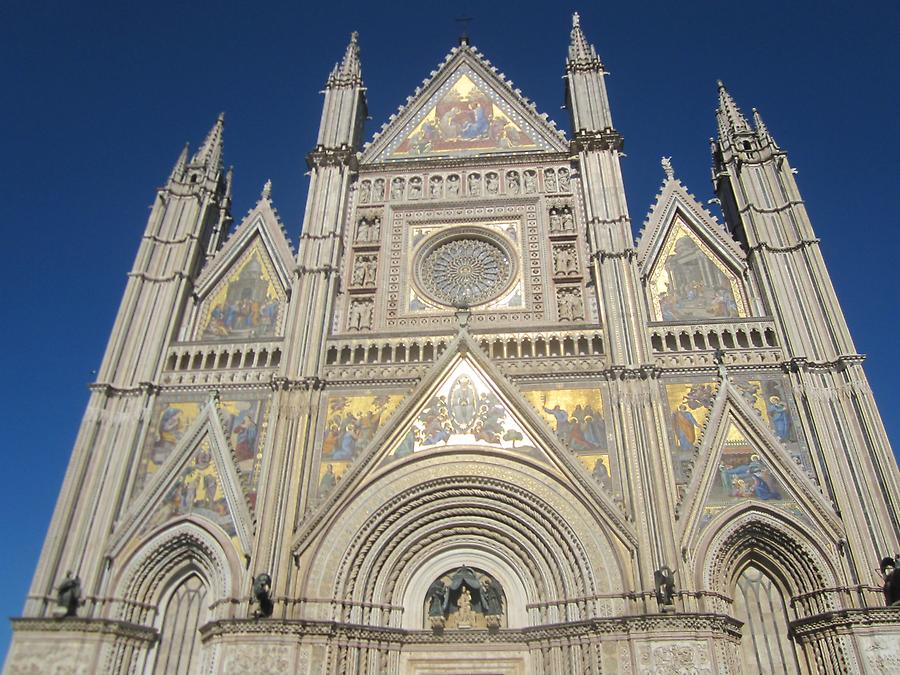Orvieto - Duomo Santa Maria#

Because of its location on a high, steep tuff cone, the city was virtually impregnable but it was last conquered by Julius Caesar. After the collapse of the Roman Empire its defensible site gained a different importance: the episcopal seat was transferred from Bolsena, and the city was held by Goths and by Lombards before its self-governing commune was established in the 10th century. In the 13th century fierce feuds divided the city which found itself often at odds with the papacy. When Thomas Aquinas, an Italian Dominican friar and Roman Catholic priest and known as a very influential philosopher, theologian and jurist of the 13th century, taught here, the city became one of the major cultural centers of those days.
Wegen seiner Lage auf einem hohen, steilen Tuffkegel war die Stadt praktisch uneinnehmbar, wurde aber letztlich von Julius Caesar erobert. Nach dem Zusammenbruch des Römischen Reiches gewann ihr leicht zu verteidigender Standort eine andere Bedeutung: Der Bischofssitz wurde von Bolsena hierher verlegt und die Stadt wurde von Goten und Langobarden gehalten, bevor sie ihre Selbstverwaltung als Gemeinde im 10. Jahrhundert erhielt. Im 13. Jahrhundert spalteten heftige Fehden die Stadt die sich selbst oft mit dem Papsttum haderte.
Als Thomas von Aquin, ein italienischer Dominikaner und römisch-katholischer Priester und bekannt als ein sehr einflussreicher Philosoph, Theologe und Jurist des 13. Jahrhunderts, hier unterrichtete, wurde die Stadt zu einem der wichtigsten kulturellen Zentren der damaligen Zeit.